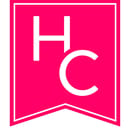It’s National Native American Heritage Month and what better way to celebrate the culture of the indigenous people of this nation than an interactive dance performance?
Dr. John Mills, Assistant Director of Multicultural Affairs at Rowan University coordinated the Piscataway Nation Indian Dancers event, which he calls an “active informational event,” that took place last Thursday, November 15. This performing group has been coming to Rowan for a couple years now and they are always a crowd pleaser, according to Mills.
This “very interactive” performing group highlights the Native American community in New Jersey because people typically associate Native Americans with the West but this community exists in the East as well. Also, the Piscataway Nation Indian Dancers “bring out cultural misperceptions” and any lingering stereotypes about Native American culture, according to Mills.
This performance is an opportunity for students to have a good time and learn something they may not have known before.
During the performance the performers often asked for members of the audience, which consisted of Rowan students, friends and family members of the performers, to volunteer and participate in the dances.
The performance consisted of four Native Americans or American Indians, which is what they prefer to be called. One of which was the main narrator or storyteller who explained the culture and meaning behind the dances that were performed. He explained that the purpose of their group is to help people understand “who we are as American Indians today.”
He also explained that many misconceptions about American Indians exist due to cowboy and Indian movies, sports mascots and other movies, such as Pocahontas. He further explained that the goal of their performance was to change those images people have of the American Indian culture.
The drum is very important in their culture because it is the heart beat of life and as long as the drum is kept alive the beauty of their culture will be passed on for generations.
The dances that they still do today are hundreds and thousands of years old. The first dance performed was the grand entry dance, which is what they do at the start of every day.
Other dances included the men’s grass dance, rabbit dance, eagle dance, inter- nation dance, and hoop dance just to name a few. All of these dances had different symbolic meanings but they are all done to show the natural harmony and balance between all living things and how it is important for humans to have a connection with Mother Nature.

